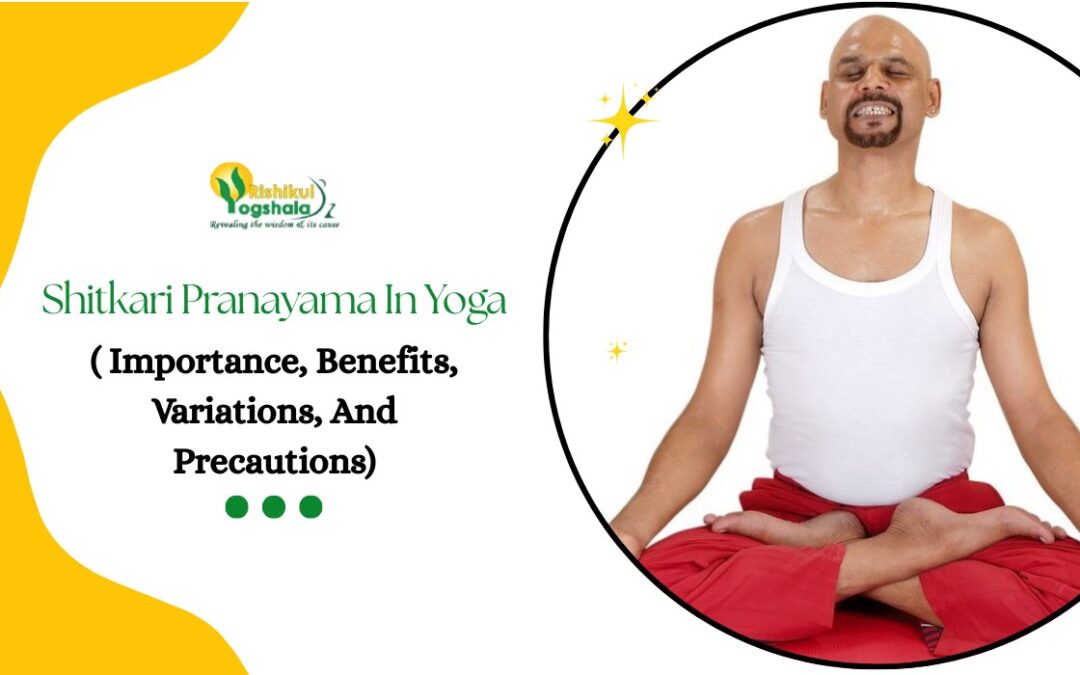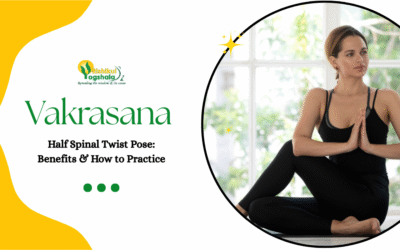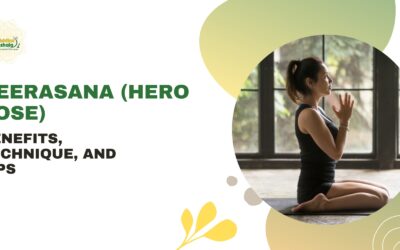We live in a fast-paced world where finding peace can become difficult. Our minds are constantly bombarded with thoughts that lead to stress and anxiety. However, practicing the corpse pose, also known as savasana, can help make your mind calm and help you build peace.
What Is Corpse Pose Yoga?
The corpse pose is an essential pose in yogic practice. This pose implies a state of complete surrender and relaxation. While you may think the pose doesn’t need effort, it is quite a task to accomplish what the pose requires.
Physically, one has to be in a sleeping position. Lie flat on the back, with palms facing upwards and eyes closed. With corpse pose, one can be removed from their thoughts, worries, and distractions!
Corpse Pose (Savasana): The Most Important Pose in Yoga
Many yoga teachers regard Savasana as the most essential pose in yoga. This is mainly so because it allows your body time to process the information and benefits received from the poses performed before. One can enhance the benefits to the body, mind, and spirit with a corpse pose.
One should keep in mind that Savasana is not nap time. One should not fall asleep while practicing it. Instead, one should remain present and aware for the complete duration of the pose. As one goes deeper into the pose, they can begin to release the tangled knots of patterns, emotions, and ideas that guide your life. With savasana, one can begin to view one’s life with more clarity and awareness.
Steps To Do Corpse Pose
- The very first thing is to find a comfortable space to lie down.
- After that, extend your legs straight and rest on your back.
- Then, adjust your body to feel comfortable.
- Make sure to close your eyes then, and relax your body parts.
- It is essential to know how you are breathing.
- If you’re breathing deeply, let the mind become still and quiet.
- Remain in Corpse Pose for 5 to 10 minutes or longer.
- When you finish the pose, slowly move back to your body.
- When ready, be seated and keep your eyes closed if possible.
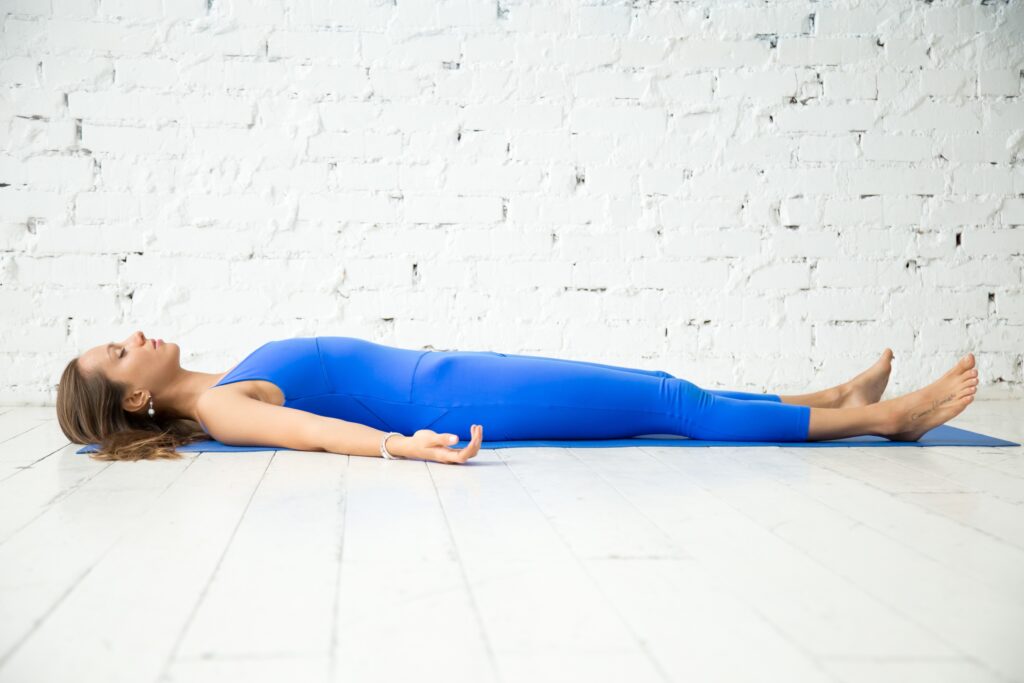
Corpse Pose Benefits:
- Reduces Stress: There are many Savanasna benefits. This very pose is beneficial to reduce stress, leading to calmness and peacefulness.
- Improves Sleep Quality: It has been said that regular practice of corpse pose helps to improve sleep quality. This very pose allows the practitioner to sleep soundly, and helping one to wake up fresh the next day!
- More Concentration and Focus: The corpse pose is very beneficial to increase concentration and focus. Thanks to this very pose, one will build on more mental clarity and also become more productive.
- Provides For Emotional Healing: The corpse pose provides a safe space for emotional processing and release. With savasana, practitioners surrender to the present moment, giving them more mental clarity and healing them emotionally.
- A Factor For Spiritual Awakening: Corpse pose is one of the reasons for spiritual exploration and self-discovery. With this pose, one may experience moments of connection within themselves and they can also walk the path to self-discovery
Three Corpse Pose Variations To Try
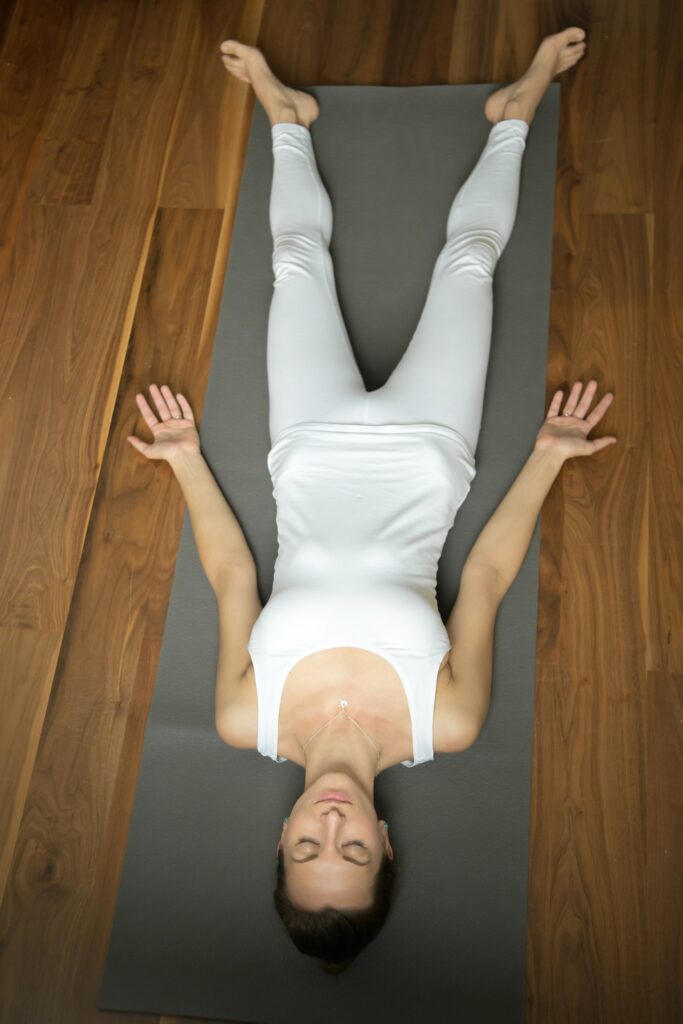
1. Prone Savasana
To practice this variation of savasana, lie on your belly with your hands down, and elbows bent out in the side, and with forehead resting on your hands. Make sure you can breathe through your nose. For more support, try placing a single folded blanket under your torso. Your legs can be spaced anywhere from hip bone distance apart to wider than your mat. This variation is good for people with lower back pain!
2. Side-Lying Savasana
This pose can be practiced lying on your side, with your body supported with props. You can line your mat with a blanket for extra padding, place a bolster between your inner thighs, use a block between your ankles, or place a blanket under your head! While resting on your side, bend your legs in front of you. Then extend the arm of the side on which you’re lying so that your head rests on your upper arm, letting your other arm drape down in front of your body. This pose is good for women more than 20 weeks pregnant.
3. Elevated Savasana
Sit in front of the bottom edge of the blanket and lie back, resting your spine over the blanket. The head should be completely supported by the props – so those having a longer torso may need additional support along the spine and back of the head. The legs can be neutral or slightly externally rotated. If the hands do not reach the floor, place blankets, blocks, or towels underneath them! This is excellent for opening up the chest and allowing the breath to move easily in and out of the body.
Also Read: Parsvottanasana (Intense Side Stretch Pose): Steps, Benefits, and Variations
Common Mistakes To Avoid While Doing Corpse Pose
- Not letting the body completely relax: To get the benefits of a corpse pose, it is essential to let go of any tension in the body and allow yourself to be fully relaxed! Don’t stress and be in a calm state.
- Don’t stay in the pose for too long: While this is a great way to relax, it’s important not to stay there too long, as this can lead to more tension and physical exhaustion! One should remain in the pose for 5 to 10 minutes maximum.
- Not aligning the body correctly: One should ensure the body is properly aligned when doing the pose to avoid strain or pain.
- Don’t do this pose at night before bedtime: Corpse pose can promote better sleep; however, doing it right before bedtime can energise the body instead of relaxing it!
Precautions To Take While Doing Savanasana
- Perform this posture on a flat, stiff, supportive surface.
- Practice this pose in a quiet and relaxing environment
- Avoid all movement during the corpse pose so that you don’t get distracted
- Don’t practice the pose if your doctor has told you not to.
- While practicing the pose, keep the room dark.
- Also, use a light blanket to keep your body warm if necessary!
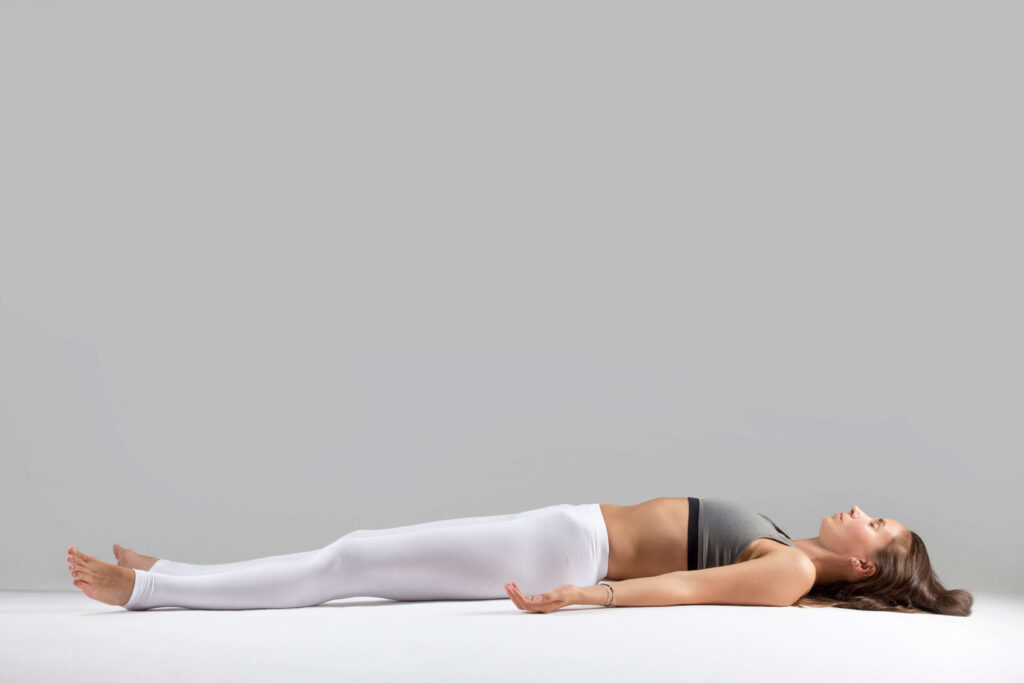
Corpse Pose Variations
Explore these variations to deepen your practice:
- Savasana with Props: Add blankets or pillows for added comfort and alignment.
- Corpse Pose Bass Technique: Combine Savasana with bass-heavy music for a grounding effect.
- Guided Savasana: Use a recorded guided relaxation session to assist with mindfulness.
Easy Savasana Pose Modifications
If you feel any discomfort, you can use a pillow to bring your head to the level of your neck. This will save you from pain and soften your neck’s back. One can also use a folded blanket to support your head. This will help to make sure that savasana has many benefits.
Some Key Takeaways
- The corpse pose is the final resting pose of most yoga routines and is meant to relax the body.
- This state of rest allows the whole body to adjust to the benefits of the previous yoga poses.
- With Savaasna, one can reduce blood pressure and access a deeper consciousness.
Conclusion
If you want to pursue a corpse pose and other poses at an advanced level, you can join Rishikul Yogshala Rishikesh. Here, one can deepen one’s understanding and practice of yoga. Nestled amidst the Himalayas, this school provides an ideal environment for students to immerse themselves in the transformative practice of yoga. Rishikul Yogshala offers programs such as the 200 Hour Yoga TTC In Rishikesh, 300 Hour Yoga Teacher Training In Rishikesh, and 500 Hour Yoga Teacher Training Rishikesh. Through experienced faculty, personalised attention, and a supportive community, Rishikul Yogshala ensures practitioners receive the highest quality education.
Some Frequently Asked Questions About Corpse Pose
What is the Sanskrit name for corpse pose?
The Sanskrit name for corpse pose is “Savasana” which translates to “corpse pose”.
How long should you stay in corpse pose?
Most yoga practitioners stay in corpse pose for 5-10 minutes, but you can adjust the time based on your needs.
Is corpse pose challenging?
While it may seem simple, corpse pose can be challenging because it requires complete relaxation and letting go of thoughts, which can be difficult for some people.
Who should avoid the corpse pose?
People with recent injuries, severe back pain, or pregnant women may need to modify the corpse pose with props or consult a yoga teacher for adjustments.
Can you do a corpse pose outside of a yoga practice?
Yes, you can practice corpse pose anytime you need to relax, even sitting in a chair for a few minutes.
Why Is It Called Corpse Pose?
Savasana is called a corpse pose, and you lie down in the posture of a dead body. The body is so still that you know the chest and abdomen rise and fall with each breath.
Can We Sleep in Savasana?
You can fall asleep in Savasana in the initial days of practice. But in later stages, try avoiding it.
Is Savasana a meditative asana?
Yes, Savasana is a meditative asana—also a preparatory pose for yoga nidra meditation.


